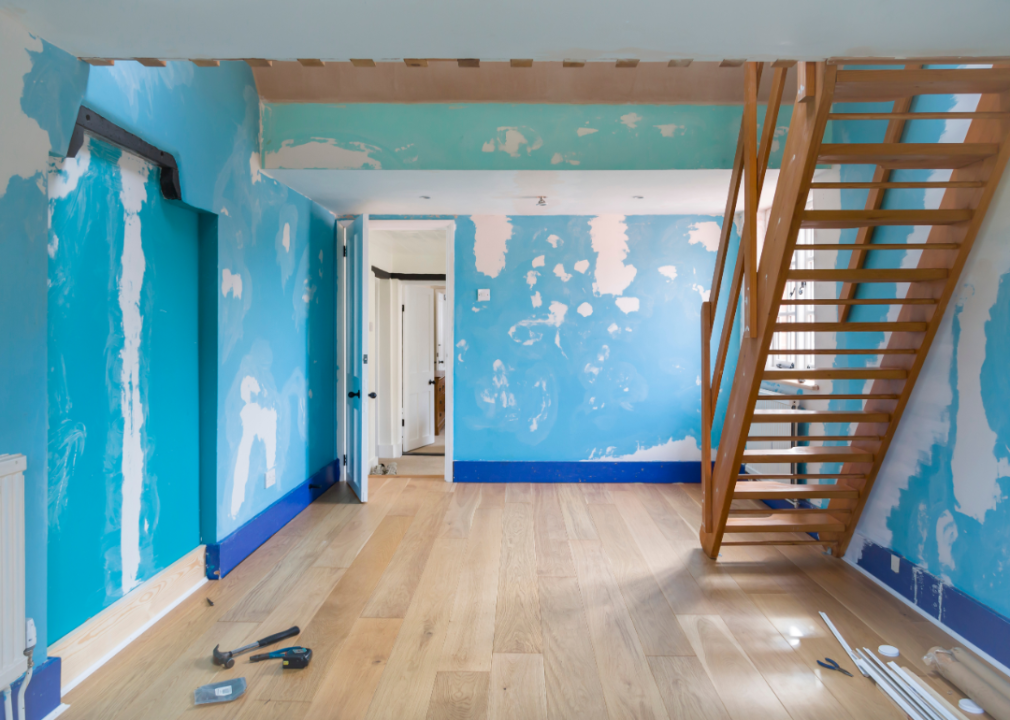
Homes in the United States are older than at any point ever recorded and Americans are spending billions of dollars to improve them.
According to the Joint Center for Housing Studies at Harvard University, the median age of owner-occupied homes is 41 years and almost 50 percent were built before 1980.
Along with the nationwide shift to remote work and education during the pandemic, the need to improve these older homes has catalyzed a surge in home renovation projects.
In fact, the JCHS reported that U.S. remodeling market spending has grown to a record $580 billion per year as of 2023. This represents an increase of 44 percent over 2019.
Among the biggest areas of growth during this time was the Do-it-Yourself (DIY) market – with DIY spending reaching an all-time high of $66 billion. According to the U.S. Census American Housing Survey, nearly 40 percent of all home improvement projects were DIY.
While America's homes are older than ever before, younger homeowners – especially first-time home buyers – are the most likely to undertake DIY projects.
In fact, one in five homeowners under the age of 35 took on a DIY project in 2021, allocating twice as much of their home improvement budgets (26 percent) to DIY than older homeowners.
This introduces safety considerations, especially when refurbishing older structures. As the under-35 group comes into the prime window for home buying, they will likely be purchasing older homes that need to be updated and remodeled.
Bailey Glasser LLP looks into some of the most common safety hazards associated with home improvement projects.
There are potential safety concerns in any home improvement project. However, these issues are magnified in older homes and when homeowners attempt a DIY project.
Homes that are over 20 years old tend to need more improvements and repairs as many core systems and components begin to cause issues. They may contain materials or conditions that are hazardous to not only the person performing the work but to all people living in the home.
Given the advanced age of many U.S. homes, it is important to conduct renovations, especially DIY renovations with caution.
Here are some of the most common safety hazards to look out for when taking on home improvement projects.
Many homes that were built before 1978 may contain lead in lead-based paint, plumbing, and more. When conducting renovations lead paint can release harmful dust and cause lead poisoning. Some projects that may expose you to lead include:
Ways to protect yourself from exposure to lead in DIY projects include:
Homes built prior to the 1980s likely contain asbestos, which can cause significant health risks when disturbed. Microscopic fibers from asbestos can be inhaled and lead to serious respiratory diseases such as mesothelioma, lung cancer, and more.
Some projects that may expose you to asbestos include:
Ways to protect yourself from asbestos in DIY projects include:
Radon is a colorless and odorless radioactive gas that can seep into your home from the ground and can cause serious health problems. Some projects that may expose you to asbestos include:
Ways to protect yourself from radon in DIY projects include:
Some products you may use when renovating your home may contain volatile organic compounds (VOCs). VOCs may irritate your respiratory system, eyes, and skin, cause headaches and/or dizziness, and in some cases can cause damage to internal organs. Some projects that may expose you to VOCs include:
Ways to protect yourself from VOCs in DIY projects include:
Mold is a common concern in home renovations, particularly when dealing with areas that are prone to moisture. Exposure to mold spores can cause allergies, respiratory issues, and other health problems. Some projects that may expose you to mold include:
Ways to protect yourself from mold exposure in DIY projects include:
Other common safety concerns when renovating a home can include:
When conducting these projects, it is important to keep in mind the safety hazards detailed above and take the proper precautions.
If you're opting to DIY your home improvements, it is important to be aware of the hazards relevant to your project(s) and take steps to ensure your safety and well-being. A few ways you can protect yourself include:
DIY smarter. Protect yourself when taking on DIY home improvement projects by being aware of the hazards and taking the necessary steps to protect yourself.
This story was produced by Bailey Glasser LLP and reviewed and distributed by Stacker Media.